SUMMARY
This is AI generated summarization, which may have errors. For context, always refer to the full article.
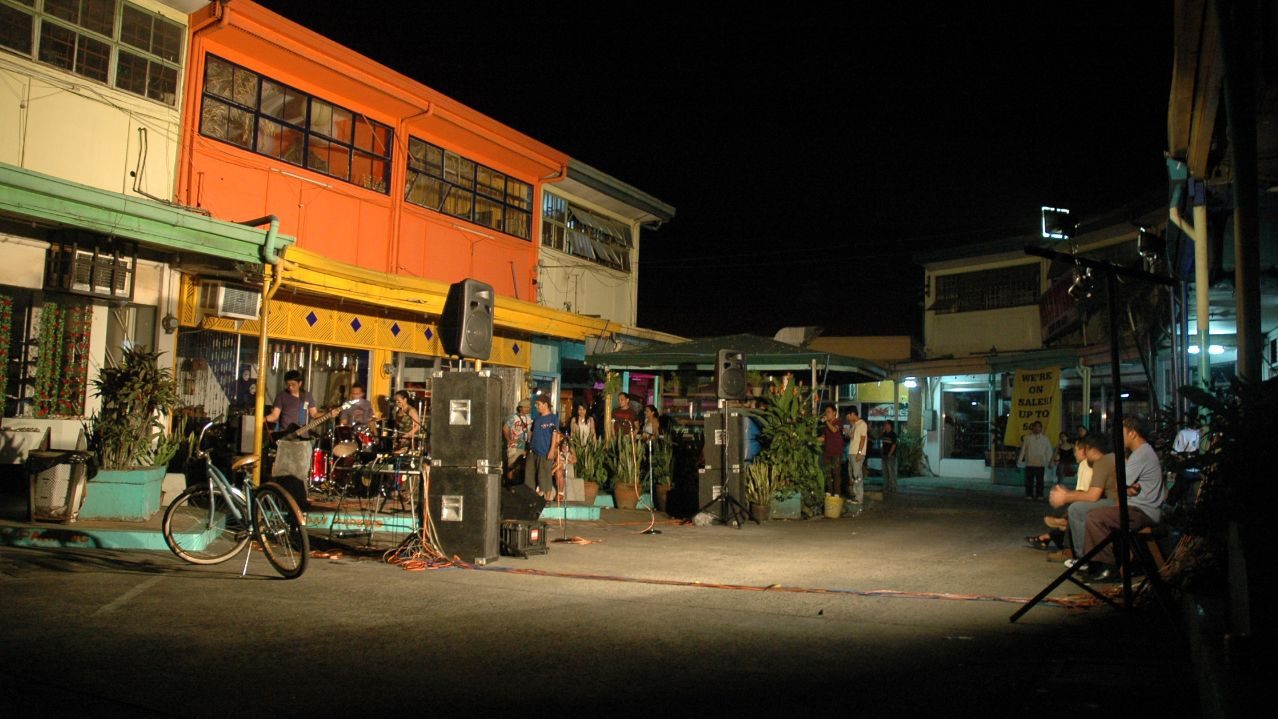
The compound where Cubao X took root was originally meant to showcase the wares of Marikina shoemakers. But the area would eventually mutate into a different, stranger kind of gathering: that of Manila’s thriving DIY and contemporary art scenes.
Cubao X – also known by its more grown-up name, Cubao Expo – should have disappeared years ago, swallowed up by the gentrification that is giving the neighborhood a polished, yuppie-friendly veneer.
But the place still stands.
We asked some of the original Cubao X tenants, and a few of the newer ones, to tell the story of how Cubao X was born, died, and was reborn, seemingly countless times. It’s a history worth hearing – but also one worth experiencing. You know, while it lasts.
(Also, feel free to check out “Love Song for Cubao X” by Isha Abubakar, a music video done by Bong Salaveria and Robert Quebral and produced for the first anniversary of Pablo Gallery, a Cubao X tenant.)
Its early days
Lyle Sacris (Filmmaker; co-owner, Mogwai and Sputnik): Cubao X started out as Marikina Shoe Expo. People would go there to buy cheap leather shoes and to go to Bellini’s for authentic Italian food. It used to be a secret place; you would bring a date to impress her.
Roberto Bellini (Co-owner, Bellini’s): We were the first to believe in this place, me and my wife.
Ma. Luisa Bellini (Co-owner, Bellini’s): In the 90s, the Lira was making way for the Euro. The Italian market was changing. We had a [photography] business there. Then Roberto said it would be better if we moved to the Philippines.
Roberto: I wanted to open a restaurant in Makati or Tomas Morato. But the problem, the rental. It was 150, 200 thousand. I came here to Cubao to buy shoes, then I saw here, rental. I asked the price, they tell me, “300 pesos a day.” [Claps hands] I take, I get.”
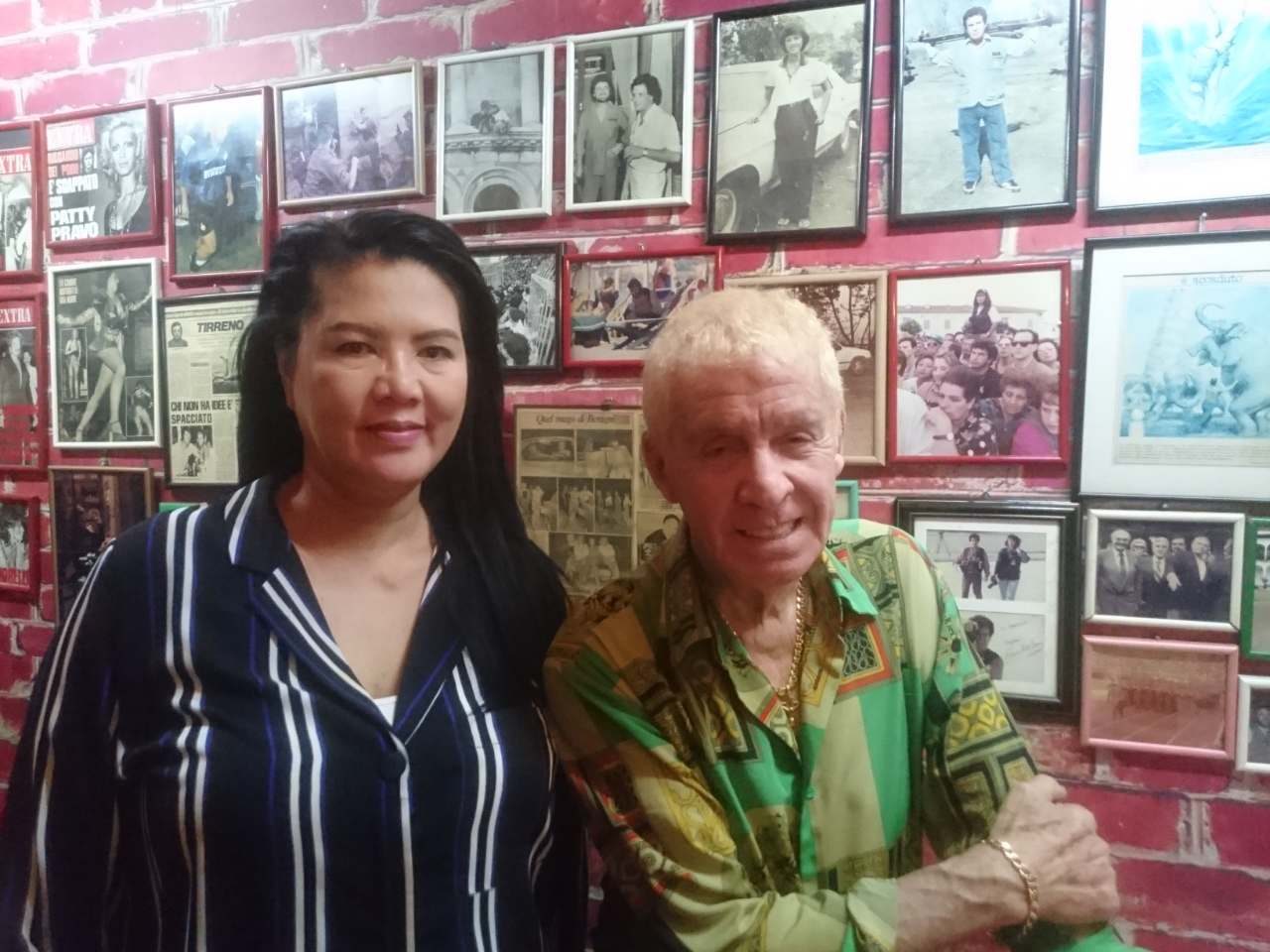
Ma. Luisa: We worked together on the menu. He’s Italian, so the Italian food is authentic, then there’s me, who’s Filipino. So I know what Filipinos want.
Roberto: Every morning, I go to the market. Me. Personal. So everyday, fresh.
Jeremy Guiab (Owner, Bespoke): Roberto was our bonding agent there, he kept our tummies full during hard times.
Robert Quebral (Filmmaker; co-owner, Black Soup): At the start, only Bong [Salaveria, of Vintage Pop] and Bellini’s were there [apart from the shoe stores]. So Bong was really the pioneer of Cubao X. He started everything.
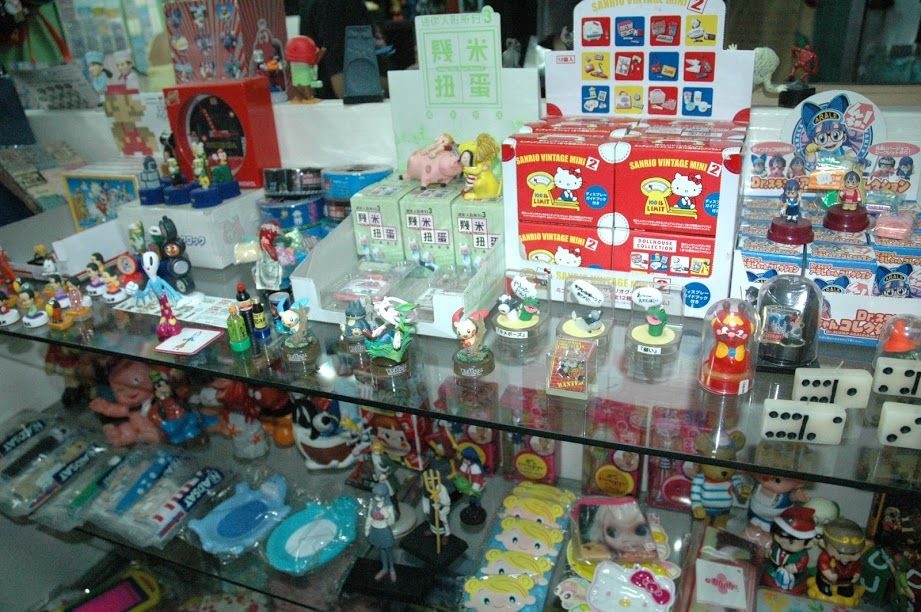
Margaret Guzman (Co-owner, Chunky Far Flung): Bong was a major selling point for us, as well. He showed us the potential of the area. Bong + San Mig Light = opening up a business with no business background whatsoever.
Bong Salaveria (Owner, Vintage Pop Works): I had lunch with my wife at Bellini’s, and after lunch, we walked around the area. And then I saw these empty spaces, and I felt they were the right size for a small shop.
I’m fond of vintage items. I have collections at home, since I used to be a filmmaker – I collect old cameras. I guess it grew organically later on, regarding the things that I could sell. I’m fond of doing my own furniture, so we did our own furniture, and then I mixed it with my own stuff and my own collection, so that’s how Vintage Pop came to be.
X names the spot
Cocoy Lumbao (Artist; co-owner, Future Prospects): We have to remember that it was not yet Cubao X as we have come to know it today when we first got there. It was still the Marikina Shoe Expo, which has slowly turned into oblivion.
Salaveria: I think it was Robert, or his wife Peach, that coined the term “Cubao X.”
Quebral: Disclaimer – the name was never official, which is why I don’t always discuss it. We never talked it over, since we were rushing to make a poster for an event. And I thought of putting [the term] since the origin [of the place] was Marikina Shoe Expo. So, you have Expo. So, X, with X being at that time… using the X sign wasn’t too corny yet [laughs]. So I said, “Just put Cubao X” and somehow, it stuck. But I never claimed that that was our name. Nobody disagreed, but it was never official.
Salaveria: I totally agree with Robert. I think he just doesn’t want to say that it was his own, because the whole Cubao X was really a community-driven effort. Everybody did their part to build this community, which I think was a great thing.

Quebral: When Bujim Aquino was going to manage the property, I said, “The name is not for sale, since it’s not mine.” I said, “Forget about it, and just try to think of something else.” And he was clever enough to come up with “E-X” [Cubao Expo] which was close enough to the original.
Experimentation, optimism, and crappy toilets
Quebral: [Cheap rent] was the number one factor why Cubao X thrived. The rates were so friendly. It was cheap, compared to the other spaces within Cubao… So it was easy to decide, “Let’s rent this, then let’s figure out later what we want to do.” Almost all [of the shops] started that way. Rent first, then figure out later what you wanted to do – that was the impulse.
Osie Ocampo (Co-owner, Pablo Gallery, later renamed Post): Rent was very cheap. But the bathroom… the bathroom was so gross [laughs].
Salaveria: At that time, I didn’t know what sort of shop I wanted to open, but I saw it as, if somebody wanted to experiment, that would be the perfect laboratory.
Guzman: It started with the space first, Tara [Illenberger], my business partner, and I saw the space, fell in love with it, and decided to rent it before even we knew what we wanted to do with it.
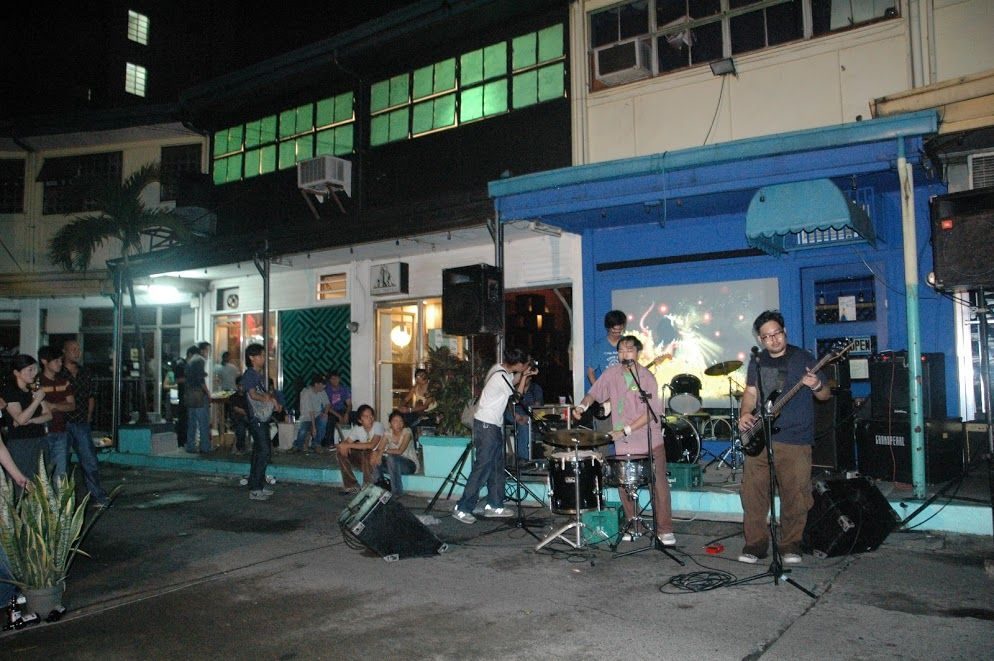
Quebral: We [Neil Daza, Avic Ilagan, Ellen Ramos, Ricky Orellana, Bodjie Pascua] went there because of Bong. We needed an office. Originally, we only needed a small space, but since the unit was up and down, we made it an office – Black Soup was a production house, primarily. Downstairs, Neil and I thought about making it a photo gallery since Neil and I were photographers.
We thought, this also needs to generate income, so we thought about starting a simple café, and I also sold wine. That was my personal business/project there. I stocked wine… which I also consumed [laughs]. Only Lourd de Veyra drank my wine at the time.
Lena Cobangbang (Artist; Curator): If you grew up around Cubao, if you shopped for shoes there, the place would be special to you. Before, you would just buy shoes, but now, you’re finally doing your own thing there.
Ocampo: I think what stands out with the shops in Cubao, are the identities of the shops themselves. Because if you’re doing what you really love, and sharing it with the people who come in, that’s what makes it part of Cubao X. It was never about being cool.
Cobangbang: It’s really made up of people, Cubao X.
The “classic” era
Ma. Luisa: When Doreen Fernandez wrote a piece about us, they [galleries and vintage shops] slowly started to arrive. Cubao Shoe Expo started to change, followed by Cubao itself.
Salaveria: It took awhile, but I guess within a year, we had about six or seven original Cubao X tenants.
Guiab: We decided to open there because we wanted to be obscure, we didn’t want a lot of people. Just the people who understand us, and that’s not a lot
Guzman: [Tara] was more into toys… and she got me hooked as well. If it were up to me, I probably would have put up a bookshop/café, but we ended up selling vinyl toys, which is just as lucrative a business as selling books. And since we had that huge second floor area we could play around with, eventually it evolved into a vinyl toy shop/gallery/performance space/café.
Lumbao: The closing of independent art spaces played a big part [in the creation of Future Prospects]. Not just [the closing of] Surrounded by Water, but also spaces like Big Sky Mind, when it was still a gallery, and when it became an artist’s compound [on 18th Avenue] in Cubao. I think the latter was where we really transitioned off. The compound had let us stage several informal art events which we can’t imagine being staged in any other galleries. I think it has really stemmed from the desire to provide a space for more unconventional art practices.

Cobangbang: After we moved out of 18th Avenue, we all looked for an apartment in the area, because we were already here, anyway. Why would we move far? Eventually, the scene spread organically. So the natural recourse was, okay, let’s make Cubao X our new hangout.
Ocampo: The famous artists were there [in Future Prospects]. Louie [Cordero], Gary [Pastrana], and Cocoy, they personally managed the gallery, and Chabet used to do lectures there every weekend; they were all there. If you compared their lineup of shows to the shows of some galleries today, the new galleries would have nothing on them. Their shows were amazing.
Lumbao: It would be hard for me to say if we did “shape” the local scene. I don’t see any immediate proof of that. But what I know is we did try to do stuff that the artists themselves planned, or envisioned, or wanted. We tried as best as we can to keep the space open for new ideas.
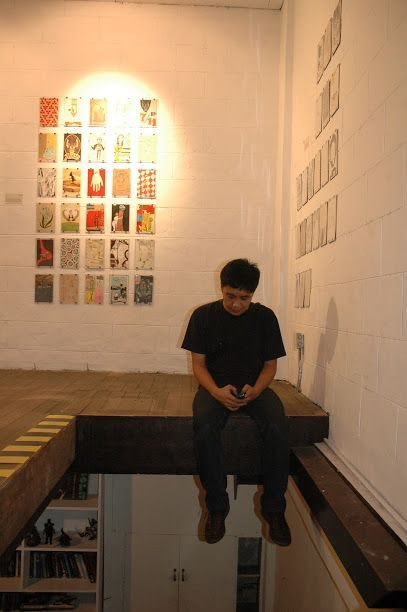
Cobangbang: It was in a laboratory phase, and we didn’t know if it would last. Well, obviously not.
Sacris: When Future Prospects closed, Erik Matti and I got that space with no clear idea of what we wanted to do. We wanted a place where filmmakers could hang out… So we ended up with Mogwai Cinematheque, which had a viewing room on the second floor and a restaurant below. Erik is quite the avid cook.
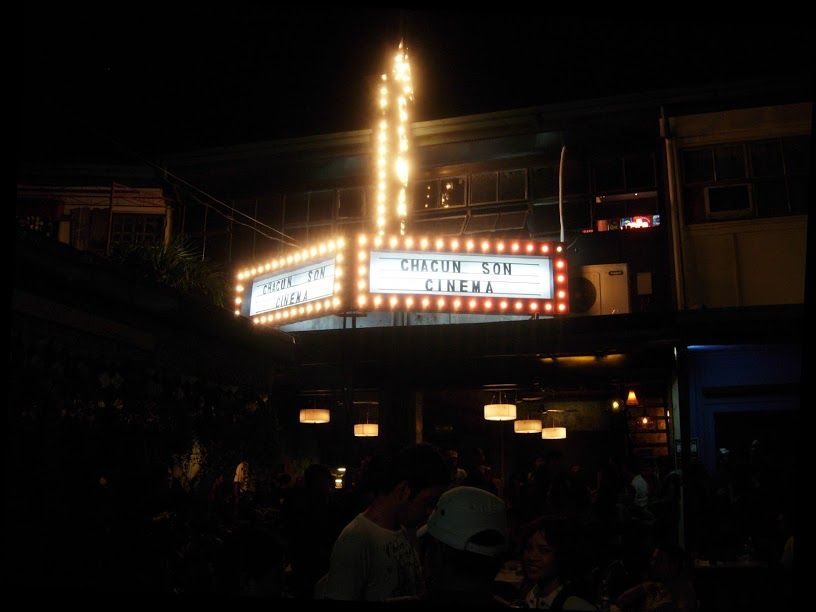
Sacris: We were the only venue that played all of Lav [Diaz]’s films then. There were a lot of screenings of independent films, student films, experimental films that you just couldn’t hold anywhere else. If there’s one thing we can be proud of, it was the cinematheque.
Consequently, another space opened up two units down. I talked to Ramon De Veyra about it and opened Sputnik Comics. That shop looked really cool with the alien and the drippings by the then-unknown Leeroy New. Chris [Costello] and Quark [Henares] eventually bought out Ramon.
Chris Costello (Creative Head, HOOQ; co-owner, Sputnik): It was always a dream for me. When Lyle invited me on, I felt like the luckiest guy alive. I’ve been a comic fan since grade school – and that’s how I met most of my friends in college.
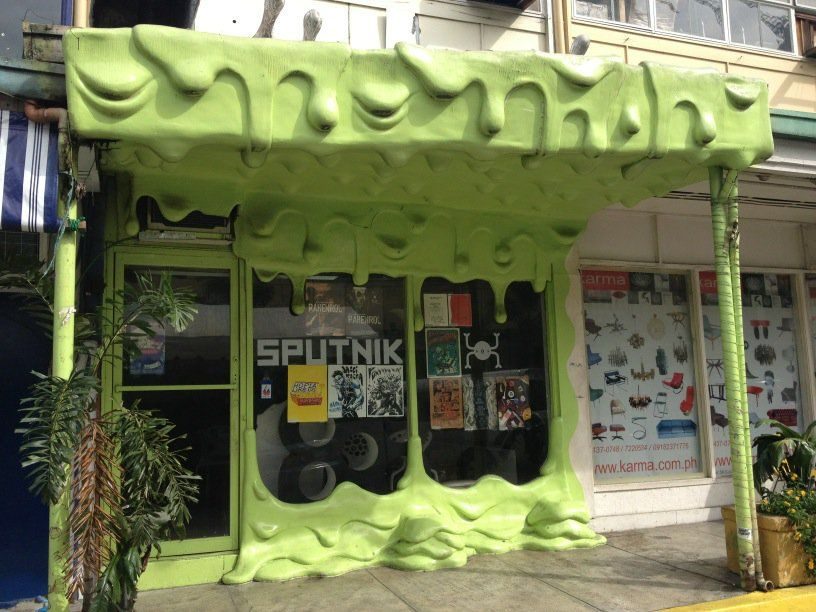
Sacris: When we opened Sputnik, we had Leinil Yu come in for a signing, but nobody realized that he was actually there. People were just passing him by because they were expecting the artist of Marvel’s Civil War to be not Filipino, I guess [laughs].
Costello: We did a few creator signings, those were easily my favorite events. Meeting Leinil Yu, Gerry Alanguilan. Plus a lot of the local creators like Rob Cham and Macoy. Those were the best. Hanging out with Arnold Arre [was great]. We also shot his short film there.
Ocampo: We were the last [of the original Cubao X] tenants to arrive. Originally, we just wanted a place where we could sell our designs. We were creating experimental furniture, the stuff you wouldn’t find at malls. When we arrived, the energy of the place was different. It was beautiful. Then a few young artists visited, and suggested we also exhibit art. So our space eventually became an art gallery.
Halloween, Cubao X-style
Quebral: Again, thanks to Bong, one of our most successful events, one that can’t be repeated, was the Halloween event. It wasn’t very planned, but what happened that night was so magical.
We invited 8 performers, then assigned them to different shops. Then we thought about making it like the Stations of the Cross.
Cobangbang: That first Halloween party had simultaneous concerts. Like, Elemento would start at Bespoke, then Sleepyheads at Pablo. It was funny, because the set-up of Sleepyheads was really rickety – one of their cymbals even flew off at one point.
Quebral: And then people started to flock in, probably by word of mouth. People came from as far as Makati.
Salaveria: On a collective note, I think it was really the Halloween event that pulled everyone together.
The end of an era
Quebral: When they increased the rent and the management style changed, we no longer saw how our existence there would be fruitful. We decided to leave.
Cobangbang: The crowd back then was different. It wasn’t so crowded. And now, if you go to Cubao, it’s so strict. Back then, you could even lie on the street [laughs].
Sacris: That’s when people from our circle started staying away, finding the place overcrowded and noisy, no place for a conversation. It became really mainstream at one point. Even Erik and I visited the place less often [laughs]. I’ve been to Cubao X maybe once or twice since Sputnik and Mogwai closed. Completely different vibe.
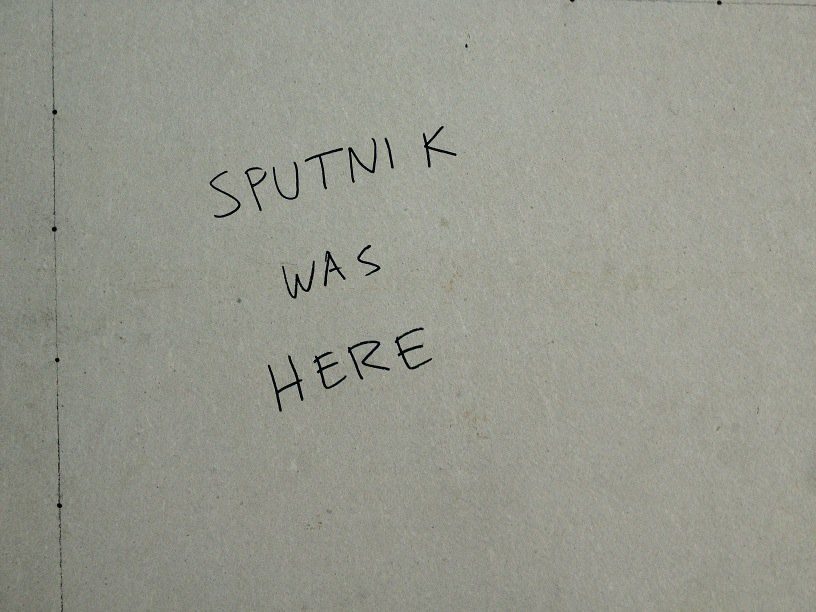
Costello: Sputnik was a dream. I was really heartbroken when it had to be closed down. But it had to be done. We cleared the unit out and I wrote “Sputnik was here” on the wall. One last fuck-you to “The Man.”
Lumbao: It was a cheap space at the heart of the city – mainly because it was obscure, and old. But we can see now how things can change so quickly after we left.
Cobangbang: Post, through all these years, were able to maintain their fighting spirit.
Ocampo: Post stayed, because we realized that while we could always put up a space somewhere else, it would be different. A big part of the gallery really is Cubao. This is where we started. This is where we learned what we know now. So we renamed Pablo as Post, to better reflect the more experimental nature of the exhibits, which suits the space better.
Today, we think about how we can best relate to the audience. You know what they say [about the new generation], it’s a generation that’s forgotten how to look because of social media and the internet. No one stands still and looks at paintings anymore. So how do you deal with that? You give them more performative, experimental pieces; you try to reach out to their other senses.
Changing of the guard
Ocampo: Cubao X is gone and Cubao Expo is no longer the same, but there are still pockets of integrity and coolness, as represented by the new spaces and a few collectives that still have spaces here.
Cobangbang: The great thing about Cubao, and in my opinion the one who is promoting the spirit from days before, are Ev [Yu] and her peers. I really like what Ev and her friends are doing, because, even if they’re surrounded by bars that come and go, they‘ve reestablished Cubao as something of a go-to place for DIY culture.
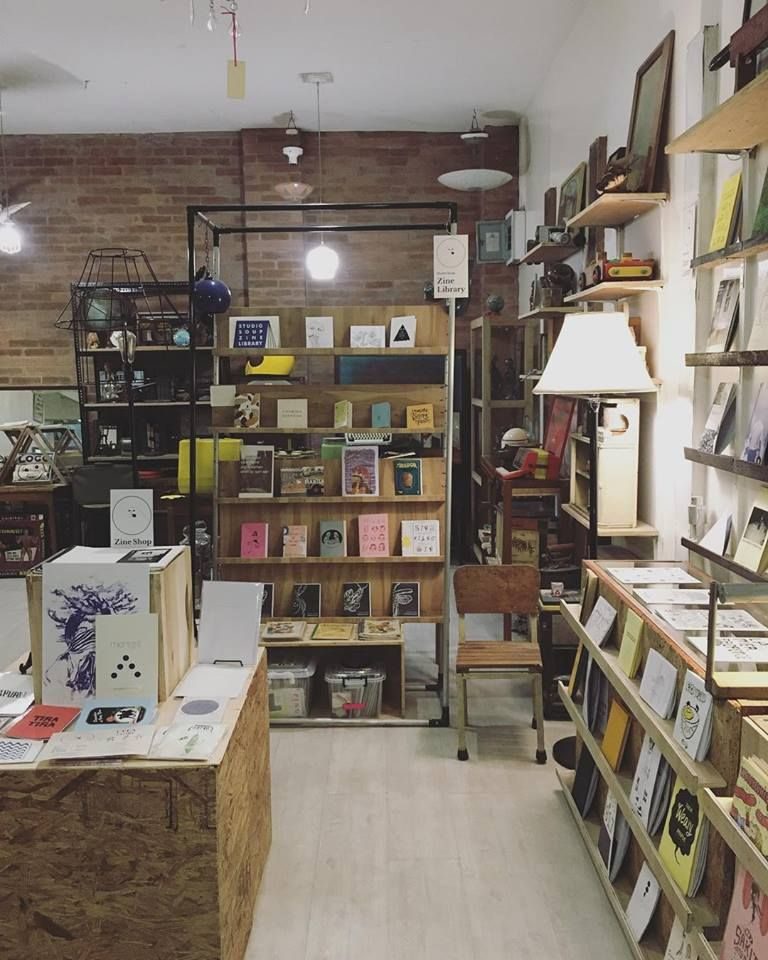
Ev Yu (Artist; Co-owner, UVLA and Studio Soup Library): I’ve been drawn to Cubao X since high school. I remember Chunky Far Flung, Sputnik, and Vintage Pop. This was the world I wanted to be a part of.
The idea that you could produce something with your own effort, without being asked by someone – the DIY culture was what I was after here at Expo.
Quebral: I’m happy that the space evolved into something where there are lots of shops. I would have loved for that many shops to be around during my time. That would have been interesting.
Yu: I’m a little confused about what Expo is, because there are so many “slash-cafés” with poetry, then suddenly gaming, cards. It’s chopsuey. So I think this is a soul-searching period.
Jay Estaris (Co-owner, Meeple Power Games): I think it is still known for art, albeit the definition of “art” has expanded. We cannot discount the sustained heritage of the curio shops that amalgamated with the record collection/music scene, the painting exchanges, and now the geekery.
Joscar Malacaman (Co-owner, Tavern at the Crossroads; co-founder, Meeple Power Games): The next wave was Mogwai, Sputnik… and then after that, we came in. And it’s another wave of shops.

Victor Prieto (Emcee, Shadow Moses; co-owner, Tavern at the Crossroads; co-founder, Meeple Power Games): I think it’s all gonna become blended. So first it was The Appraisery [now called Tavern at the Crossroads] and then Coast Thru Life came in, which is a surf shop and a lifestyle shop… Rumpus Room is the video gaming café right beside us. This is what we call “Nerd Row.”
Malacaman: It felt strange at first because all of a sudden, you have geeks in Cubao Expo and you know, geeks are loud and proud. So suddenly, there’s an avenue for people to be able to express their geeky side.
While it lasts
Salaveria: Everybody knew that sooner or later, once Cubao X grew, I think there was talk of gentrification.
Cobangbang: Now, you see a lot of high-rises. And the funny thing is, there’s a high-rise, and then there’s still this termite-infested, 70s-era structure in the midst of all this development. And then you have this overdone, surreal faux art in Art in Island [laughs].
Estaris: With the rise of condominiums and some malls that cater to a more affluent crowd, the threat of gentrification is real and I understand why tenants choose to see their stay in The X as temporary. Still, this quaint little U of a street represents the rich culture of Cubao of old and, at the risk of sounding like a character from a teen movie from the 80s, we must defend the preservation of this heritage.
Salaveria: I guess we were really crazy back then, right? To open a shop knowing that the place was uncertain. Then again, that was never an obstacle to us. We just kept doing what we thought was right.
Quebral: Older people have the tendency to say, “We were cooler!” and I always hear people complain, “The crowd is now different.” But I jokingly tell them, “No, you’re just old!” which is true. It’s just a different generation hanging out there now. But yes, we were cooler [laughs]. – Rappler.com
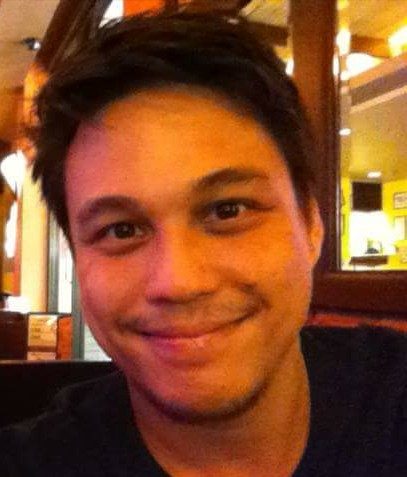
Iñigo de Paula is a writer who lives and works in Quezon City. When he isn’t talking about himself in the third person, he writes about pop culture and its peripheries.
Add a comment
How does this make you feel?
There are no comments yet. Add your comment to start the conversation.